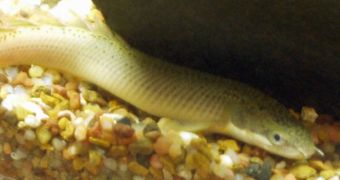By studying the scaled armor of a species of fish that have been swimming through the freshwater pools of Africa for the past 100 million years or so, engineers from the Massachusetts Institute of Technology now revealed the secrets to one of the most effective aquatic armors, which could eventually lead to the development of armored suits for the soldiers of the future.
The fish examined by the researchers during the study is known as the gray bichir (Polypterus senegalus), after it's been called the dinosaur eel, although it is not an eel. The analysis of its scales showed that they are made of several materials lined up in such a way so as to give its armor maximum effectiveness. "Such fundamental knowledge holds great potential for the development of improved biologically inspired structural materials, for example soldier, first-responder and military vehicle armor applications," said lead author of the study Christine Ortiz of the MIT.
During its distant past, this shield would have been a key component in protecting individuals from attacks launched by members of the same species or other predators in the murky waters of Africa. There is evidence that some armored fish species, such as Dunkleosteus terrelli, would have been capable of biting right through the exoskeleton of its prey and into the flesh beneath it. And the same armor protecting the gray bichir in its past is proving to be of help even today, fending it from other members of the species and predators.
The study, funded by the U.S. Army, measured for the first time the material properties of a single fish scale, and revealed that each of the four layers of material, with different chemical and physical properties, equally contributes to the strength of the armor.
"That doesn't surprise me that millions of years or hundreds of millions of years of evolution would be a good starting point for what we need for this day and age. The armor's been sort of fine-tuned during that time for different aspects," said assistant curator of zoology Leo Smith of The Field Museum in Chicago.

 14 DAY TRIAL //
14 DAY TRIAL //